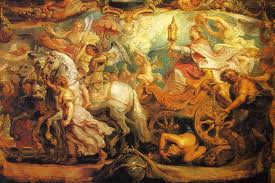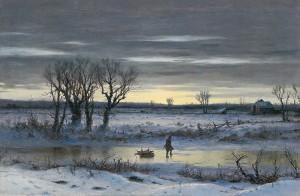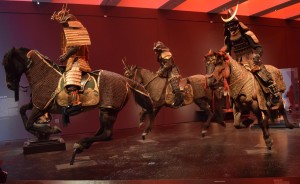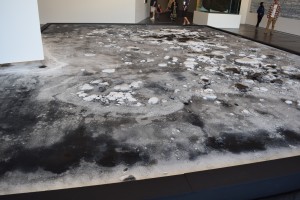As art aficionados know, anything aesthetic is the first thing cut at school board meetings—art is considered a frill! This month’s line-up ought to send the naysayers rethinking.

You may find Seth Rogen’s bathroom humor not very amusing. I recently watched Rogen in Neighbors which is about a late twenties couple complete with infant who move next door to a frat house. Rogen plays a new dad who hasn’t quite grown out of his beer-drinking mentality—the breast feeding jokes are the grossest. I mailed the dvd to son Oliver, who graduated in film from Cornell and will watch anything; he appreciated the humor. Guess thirty-four years between us may be the explanation. Rogen’s latest movie, The Interview, may be another indication Rogen should be thinking about maturation like Bill Murray. But then SNL’s Chevy Chase, who never grew up, has been reborn in the now cult classic, National Lampoon’s Christmas Vacation. Rogen’s latest movie, which allegedly upset the North Koreans, polarized the holiday season much the same as Ebola at Halloween.
And then there is our upcoming Renaissance with Cuba. Those who have a gripe with Obama and/or the Pope say both needed a boost in their ratings. As the late Joan Rivers said, “oh grow-up!” Here are my obscure connections with Cuba. In grad school, I interviewed/wrote a column about Cuban artist Tania Bruguera, continues to commute unimpeded to the US in the name of art. I juxtaposed my Bundy relatives who played a key role in the Kennedy administration’s attempt to rationalize post-war Communism through the near miss Cuban Missile Crisis. And, I actually saw Fidel Castro in the late fifties. My dad and I were driving down Boston’s Storrow Drive heading to a Harvard track meet behind Castro’s limo. His head and iconic cap were visible to us as was the Cuban flag waving from the driver’s window. And one afternoon, when I came home from elementary school, I found a Cuban family sitting rather nervously in the parlor of our Boston town house. Apparently they were refugees and had been locked out of the Church of the Advent across the street. After an awkward introduction, I was whisked away to my top floor nursery. Amusingly, there is a similar scene in Upstairs Downstairs when Belgian refugees arrive at Eaton Place; the Bellamys must deal with a politically exiled family too.

Anyway, the Pope apparently was a key player in loosening our relations with Cuba, but his movie release The Vatican Museums in 3-D could use a makeover. It isn’t raunchy like a Rogen flick but it doesn’t give the viewers much of an idea of what it’s like to hike for hours through Greek and Roman sculpture, ancient maps, finally entering colossal St. Peters. The movie shows the highlights: the Lacoön sculpture, Raphael’s School of Athens, and the ceiling of the Sistine Chapel. 3-D works for sculpture but it tears apart the color relationships of a flatwork, so Michelangelo’s God fingering Adam gets badly distorted, resembling paper dolls stacked into a shoebox-esque tableaux.
While I am on my movie soapbox, my husband Dave and I just came back from a fabulous pre-Christmas weekend of art and family in Los Angeles. We bought on-line tickets to see Mr. Turner. Buying reserved seating for a movie is a new idea and worth the extra few bucks as no one pushes to get the prime cut of center seating. The shots of St Ives (a stand in for present commercialized Margate) are spectacular and nicely contrast with the metaphorical smells of that era’s lack of bathing habits. After the movie some in the ladies room expressed disappointment at the scant narration. Time is subtly expressed as a sleepy fishing village butted up against the apprehensive arrival of the train along with the continuance of societal disparities expressed in the gradual worsening of Turner’s housemaid/mistress’ skin condition. The movie Mr.Turner quietly arrived; apparently the North Koreans don’t care for 19th century English landscape.
While in Los Angeles we spent a day at the Getty Center. James Cuno, formerly of the Art Institute of Chicago, now rules over the Getty’s vast empire of rough-cut white rock walls and verdant desert shrubbery. J. Paul…, like William Randolph Hearst, scooped up crate loads of European art, not all that interesting. Cuno has livened up this palace of art research with more exciting shows and multiple ‘exiting gift shops.’
The exhibition, Spectacular Rubens: Triumph of the Eucharist (thru January 11) displays huge tapestries of Counter-Reformation imagery complete with Rubens’ oil sketches. These 17th century wool and silks (color is all in the horizontal, or weft, threads) were commissioned for a monastery in Madrid. The weavers worked from the back and had to weave a mirror image off the sketches.

Another Getty exhibition was World War I:Images of War (thru April 19), a display of photographs and posters done by Modernism’s finest: Leger, Otto Dix, Kathe Kollwitz, who honed their aesthetic abilities thanks to World War I’s horrific narratives.
Needing something more humorous, we ran into a docent explaining one of Getty’s popular furniture pieces, a double 18th century French bed with a headboard on three sides. Designed by Jean-Baptiste Tilliard, this ‘lit’ is considered Turkish exotic because of its bolster pillows. Apparently, when pins are removed, the mattress and frame slide out, allowing servants to make the bed without crawling on the actual bed—lots of giggles in the gallery.
The Getty is a great all day excursion. You park at its base, ride the tram and leave behind the overcrowded freeways for this art spa and gorgeous view of the Pacific Ocean, provided the pollution is low. The Café makes a great taco salad; we returned at teatime for a catch up with son Oliver and gf Kate.
Dave and I spent our last day at Los Angeles County Art Museum. LACMA is the biggest Western museum, with a mish-mash of twentieth century architecture—Art Deco to faux-Pompidou. The cafeteria lunch menu served a decent broccoli puree and a grilled turkey/cheese panini. There is a mock Starbucks for that much needed break; service was a bit slow but the exotic tea and fruity muffin was worth the wait. Come on LACMA, your gift shops could use a makeover! Art books look pre-read and you don’t even sell a logoed t-shirt, art- loving grandmothers like me love to shop. I did manage to find a pink serving tray with five male tuxedoed hands holding erotic red lipsticks, for my daughter who likes ’60s kitsch.

The Postmodern artist Pierre Huyghe (thru February 22) occupied a large space with a bunch of unconnected displays that seemed more like he was cleaning out his studio than making some organized point. Before we could enter the space, a tuxedoed man asked for our names and loudly announced us to the gallery—no one flinched. We obeyed, but cursed ourselves for becoming victims to those in authority. Huyghe’s marionette video was clever but a LACMA guard told us the ice skating rink, which was supposed to sport a real skater, wasn’t cold enough; the ice appeared moldy and more like a failed science project. Worn fur coats were tossed in corners against unfinished sheetrock walls. A machine was making falling snow that visitors were told not to touch. Boy, it gets confusing; remember the Gonzalez-Torres hard candies that sheepish visitors were encouraged to eat? On the way out we walked past an emaciated greyhound-esque dog who obediently followed his handler throughout the displays–as we were constantly reassured he wasn’t abused. The dog needed one of those furs.
We passed a display of 17th century Samurai, Japanese Warriors (thru Feb 1), engaged onlookers as well as kids enjoying a Christmas vacation art lesson. Their teacher was pointing out the contrasting textures: iron helmets, woven grass armor and fur boots on the prancing horse and rider manikins.
Archibald Motley, Jazz Age Modernist (thru February1) expresses how the dominant white culture believed this was the way a black minority behaved. Using magenta and blue glazes, Motley portrays stereotypes: the evil pimp who sports a cigar and derby to the over-sexed female-temptress.
Adding to this year’s art as comfort food are more old favorites in American Vision: The Hudson River School (thru June 7th). Paintings visualize the hopeful continuation of Upstate New York’s Jeffersonian 19th century. Cows grazing under thick greenery, gaff-rigged schooners slide past rolling hills, and yes, iced-over rivers could be used for sled transport. How would Cole, Kensett, or Durand react to subdivisions and turnpikes with fast food exits?
Later that weekend Kate and Oliver treated us to dinner at Sir Winston’s, a restaurant on Long Beach’s decommissioned Queen Mary. It was extremely foggy the night we climbed aboard; slippery decks and the blacked-out harbor made us feel we were actually on the high seas. Kate is an aficionado of the QM, so eating beef Wellington (available in a vegetarian version) surrounded by maple paneling along with Churchill memorabilia was thought to re-start my dissertation after the holidays.
Art may not always move mountains but it seems to point out our frailties. Keep on supporting the arts in 2015. Exhibition catalogs available on Amazon.




